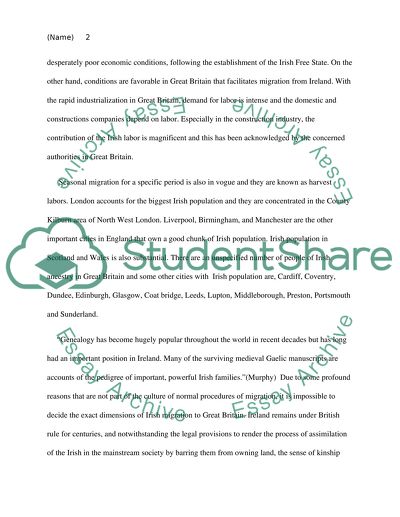Cite this document
(“Irish migration to Great Britain Research Paper”, n.d.)
Retrieved from https://studentshare.org/english/1480364-irish-migration-to-great-britain
Retrieved from https://studentshare.org/english/1480364-irish-migration-to-great-britain
(Irish Migration to Great Britain Research Paper)
https://studentshare.org/english/1480364-irish-migration-to-great-britain.
https://studentshare.org/english/1480364-irish-migration-to-great-britain.
“Irish Migration to Great Britain Research Paper”, n.d. https://studentshare.org/english/1480364-irish-migration-to-great-britain.


